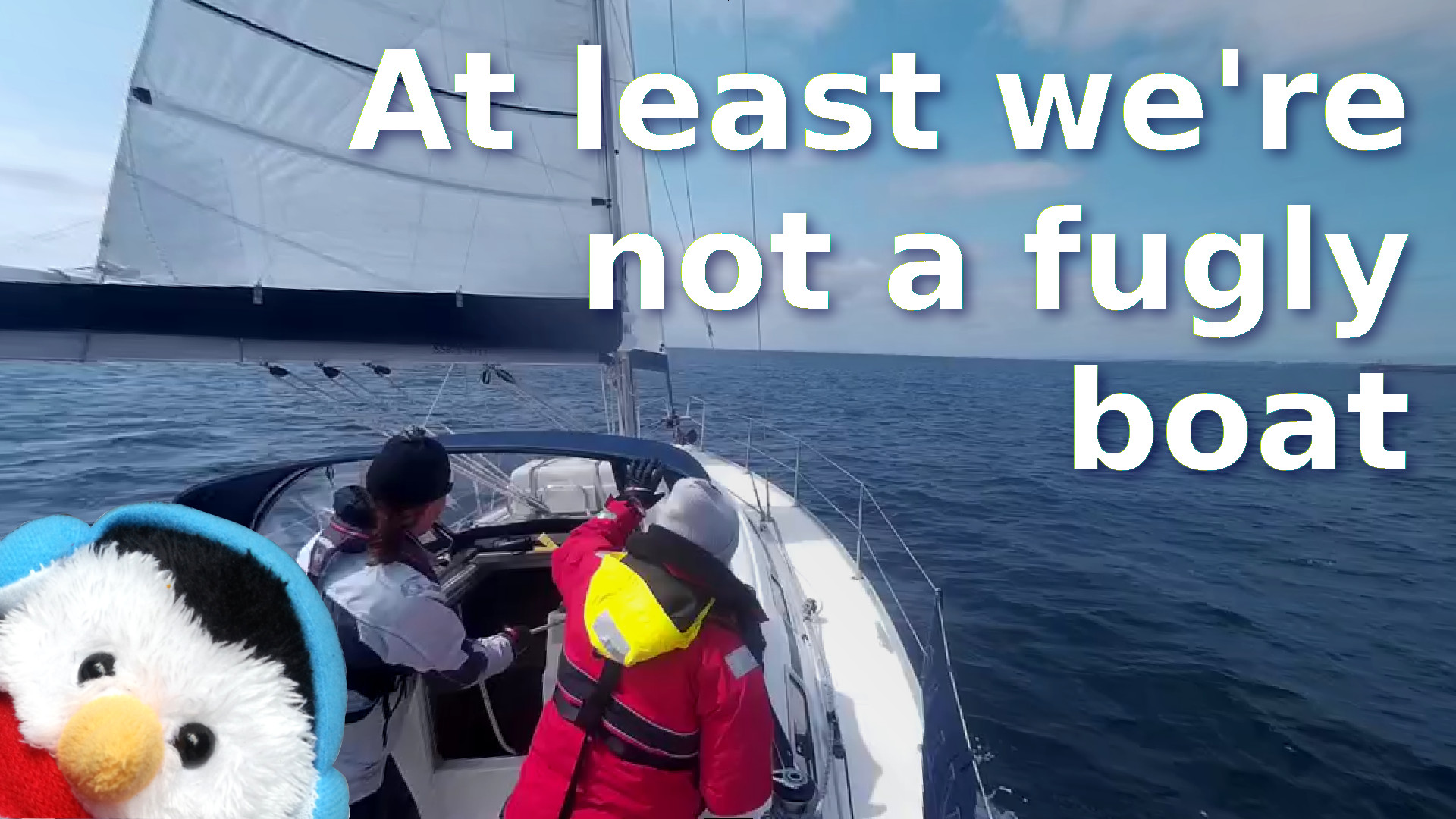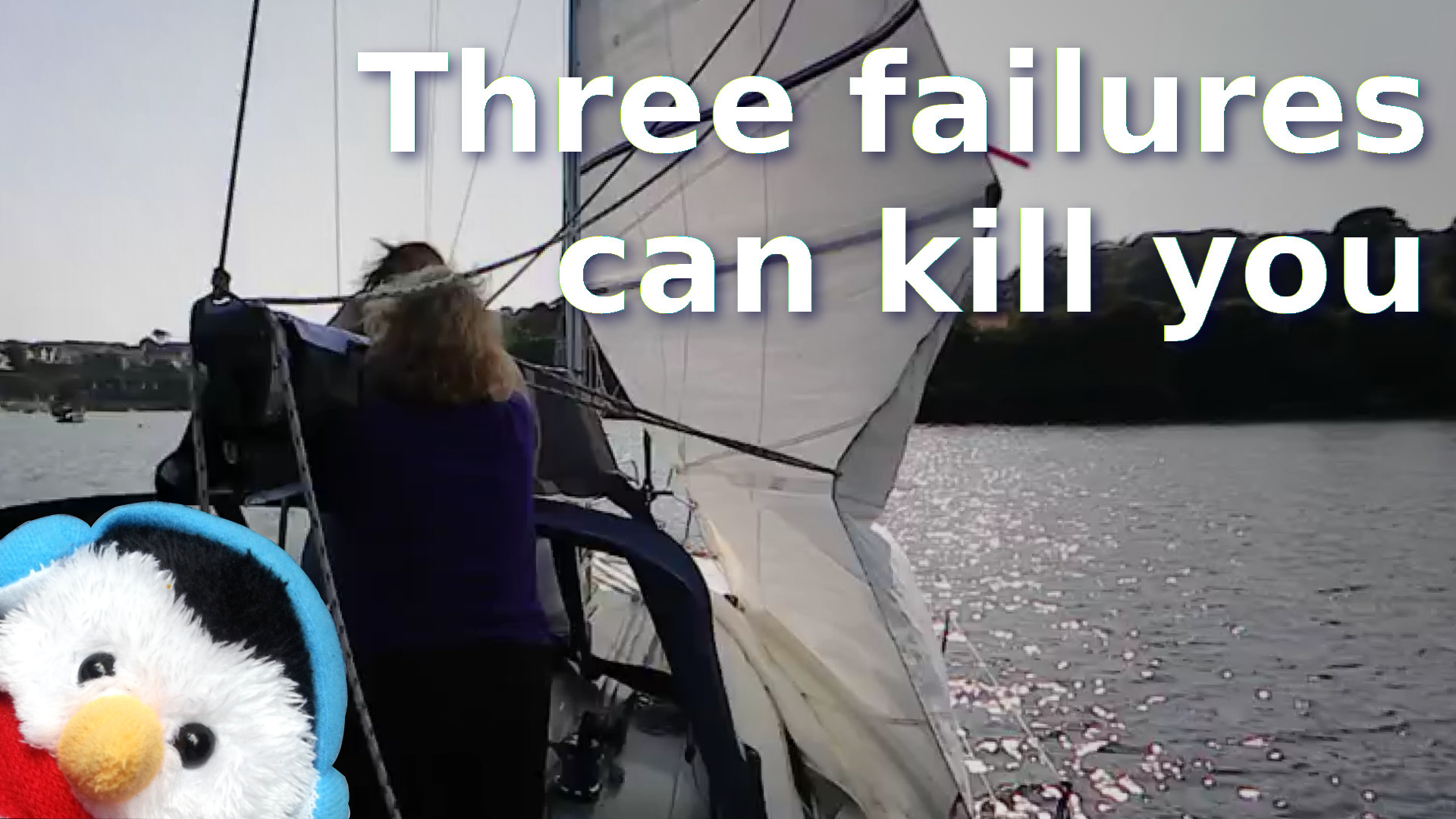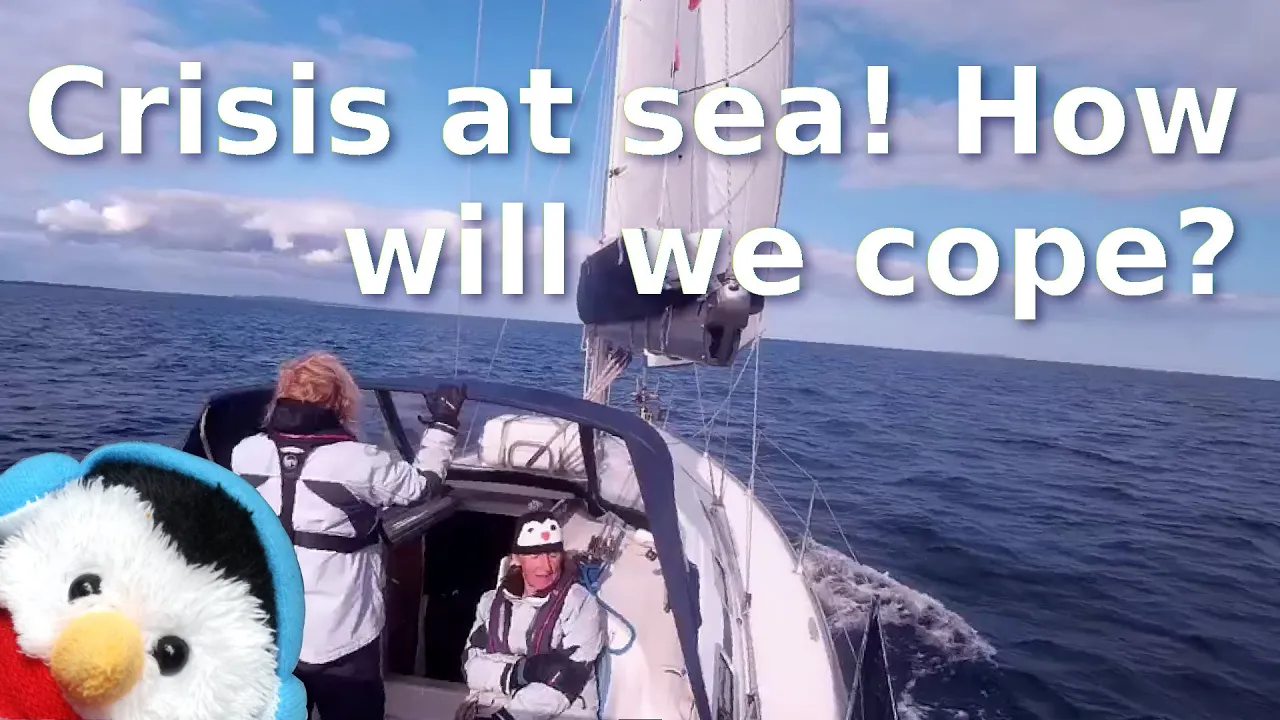We left Kilmore Quay with a little bit of fowl tide. The tide turns early inshore, but we went about an hour earlier than that so that by the time we were at the corner of Ireland the tide would be in our favour. The sailing conditions were good with smooth seas and a bit of swell from the Atlantic. Even with good conditions, it still takes us time to settle into the sail. There is a lot to do:-
- Getting the fenders in and preparing the boat to sail
- Assessing the sea state
- Assessing the weather conditions
- Getting the sailboat set to make the best use of the wind
- Trimming the sails
- Balancing the boat so that the auto pilot has very little work to do
- Calming down so that you can enjoy the sail.
We were on a down wind sail, so with these conditions we only furl out the Genoa to the first reef, which for our sail boat, is where a normal jib sail would be at 100%. We sailed against the fowl tide at about 3knots but as predicted, as we got to the corner the tide started to turn in our favour and once we were behind the headland, the swell from the Atlantic dissipated.
With a downwind sail we needed to gybe the boat, we had done two gybes when we decided to turn the cameras on, so that we could film our gybe. We had two great gybes, but the one we filmed was not so great. Beverley called it disastrous, but realistically, there were a few mistakes, but we learned from them, so that is all we can do.
- Start of the gybe - Not quite ready
Be ready for your manoeuvre, for us that is, turn our auto pilot off so that we are in control, make sure we are wearing gloves, so that the ropes do not burn our skin and have the sheet ready - Gybing
While you are gybing, pull in the main sail so that when you are gybing you are in control of the main sail, so that it crosses the boat in a controlled manor. Once you have gybed let the main sail out using the main sheet. - Sort out the Genoa
Normally that is a simple task, but in our case the lazy sheet was wrapped around the forward cleat, so regardless of how much Beverley cranked the working sheet, the Genoa, would not set correctly which is why Beverley had to go forward. Lesson learned, make sure that you keep the lazy sheets tight so that they do not have any slack to get fouled on cleats etc. - Watch where you are going
It is really difficult to watch where you are going and not the other members of the crew, but if you are helming the boat, that is your task. Also remember that when you are gybing the wind is behind you, so do bear that in mind - Keep calm
When things are going wrong then it can a very trying time, so keep calm. If tempers do get frayed, apologise as soon as you can
A lot of channels do not put in their mistakes, but honestly I can look at this clip and laugh so hard that tears are streaming down my face. I can see where we made mistakes and sometimes it is easier to learn from watching mistakes that seeing everything done right, and if we can entertain people and teach them a little then we are doing our job. With such a disastrous gybe, we decided to turn the cameras on again for our next gybe, which went a lot better apart from the fact that Beverly unwound the working sheet and not the lazy sheet. I have to say because it is smoother, it is not as easy to learn how to do it correctly.
After our gybing stint, we continued up the coast to Arklow, arriving in well after sunset, so I used my torch which I bought with our You-Tube earnings.













